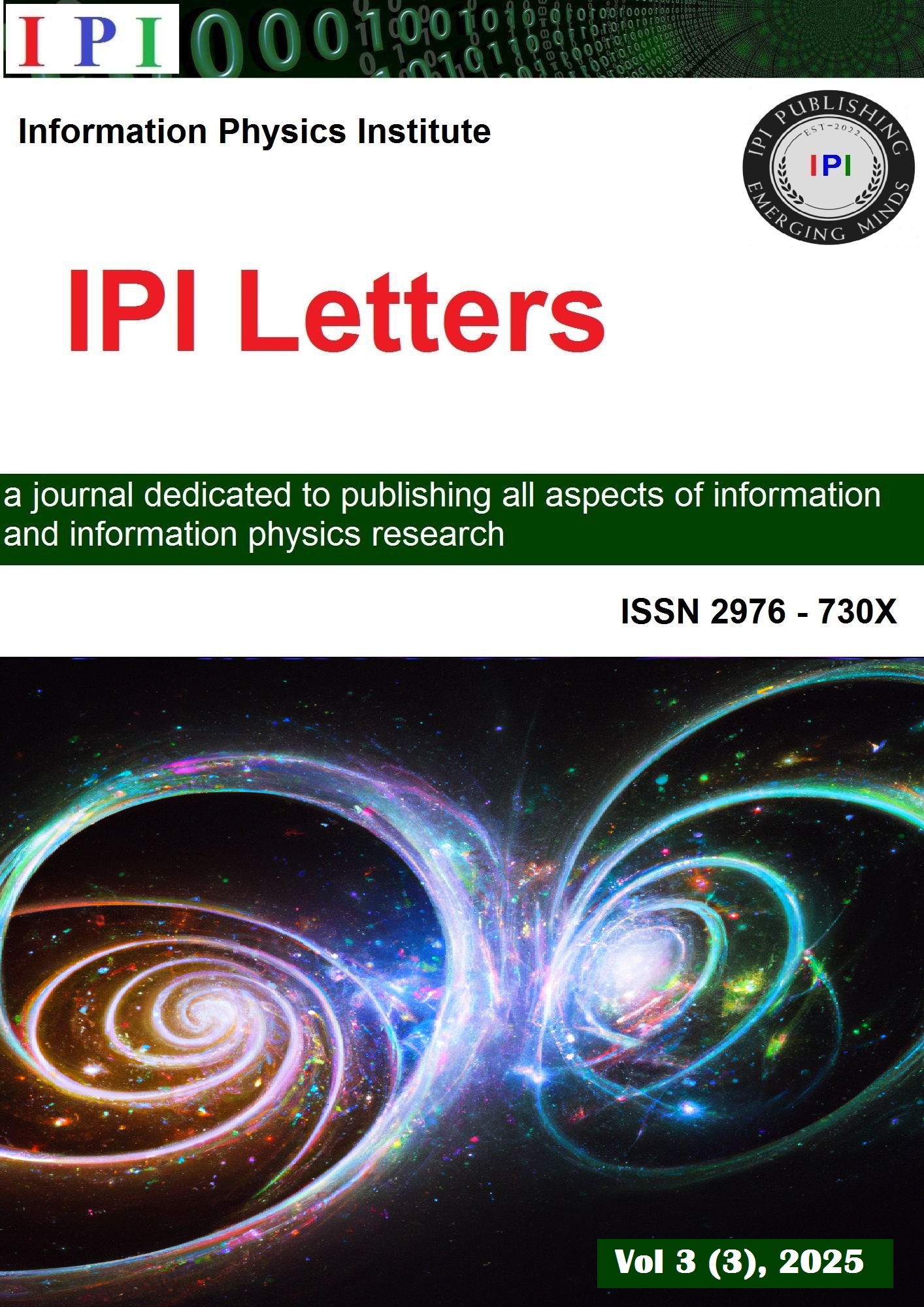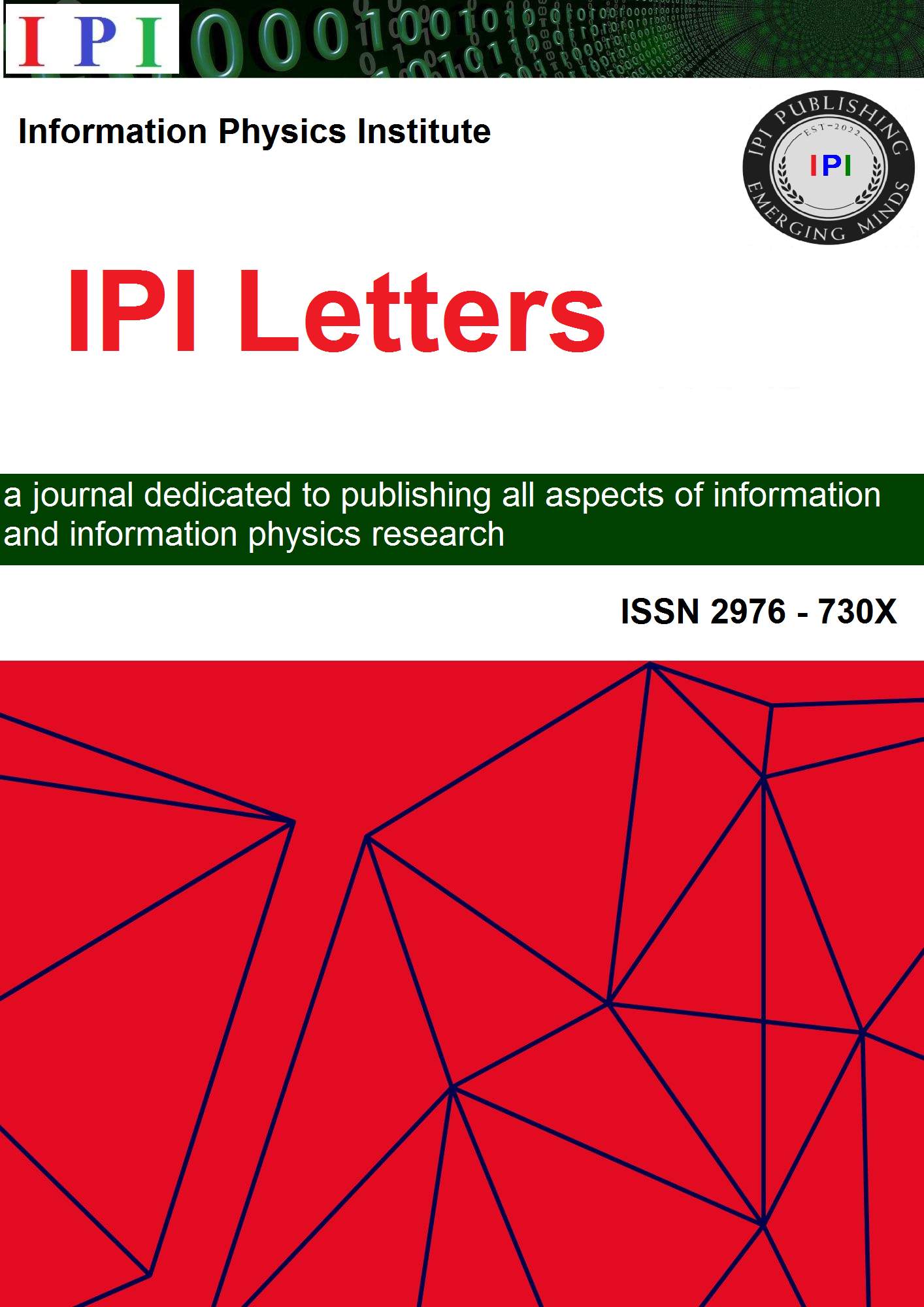Little Bangs: the Holographic Nature of Black Holes
DOI:
https://doi.org/10.59973/ipil.177Keywords:
Black Holes, Holographic Information Rate, Information paradox, Bekenstein-Hawking entropy, Quantum Gravity, Thomson Scattering, Information Saturation, Space- time ExpansionAbstract
Recent discoveries in CMB E-mode polarization have revealed discrete quantum phase transitions governed by a fundamental information processing rate γ = 1.89×10−29 s−1. We extend this framework to black hole evolution, proposing that when reaching information saturation at the holographic entropy bound, black holes undergo localized spacetime expansion events (“Little Bangs”). Our framework yields several novel findings: (1) a quantum-thermodynamic entropy partition reconceptualizing black holes as entropy organizers not information destroyers, (2) information pressure as a physical force driving spacetime expansion, (3) an information-theoretic derivation of the Hubble parameter, and (4) a mathematical E8×E8 structure explaining information encoding across scales. These transitions occur at integer multiples of ln 2 with a characteristic 2π geometric scaling ratio. Our model resolves the black hole information paradox through dimensional
expansion rather than information loss, suggests dark matter emerges as coherent entropy structures, and proposes information as the primary constituent of reality. We present falsifiable predictions testable through statistical correlation methods in multi-messenger astronomy.
References
’t Hooft, G. (1993). Dimensional reduction in quantum gravity. arXiv:gr-qc/9310026.
Susskind, L. (1995). The World as a Hologram. Journal of Mathematical Physics, 36(11), 6377-6396. DOI: https://doi.org/10.1063/1.531249
Bekenstein, J. D. (1973). Black Holes and Entropy. Physical Review D, 7(8), 2333-2346. DOI: https://doi.org/10.1103/PhysRevD.7.2333
Hawking, S. W. (1974). Black hole explosions? Nature, 248(5443), 30-31. DOI: https://doi.org/10.1038/248030a0
Hawking, S. W. (1975). Particle Creation by Black Holes. Communications in Mathematical Physics, 43(3), 199-220. DOI: https://doi.org/10.1007/BF02345020
B. Weiner, “E-mode Polarization Phase Transitions Reveal a Fundamental Parameter of the Universe,” IPI Letters (2024). DOI: https://doi.org/10.59973/ipil.150
59973/ipil.150
Witten, E. (1998). Anti-de Sitter space and holography. Advances in Theoretical and Mathematical Physics, 2, 253-291. DOI: https://doi.org/10.4310/ATMP.1998.v2.n2.a2
Almheiri, A., Marolf, D., Polchinski, J., & Sully, J. (2013). Black Holes: Complementarity or Firewalls? Journal of High Energy Physics, 2013(2), 1-20. DOI: https://doi.org/10.1007/JHEP02(2013)062
Isi, M., Farr, (2021). Analyzing black-hole ringdowns. arXiv:2107.05609 [gr-qc].
Downloads
Published
How to Cite
Issue
Section
License
Copyright (c) 2025 Bryce Weiner

This work is licensed under a Creative Commons Attribution 4.0 International License.















